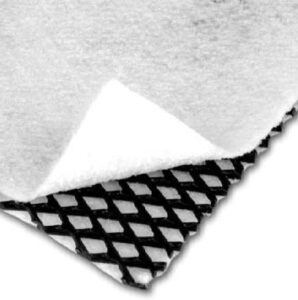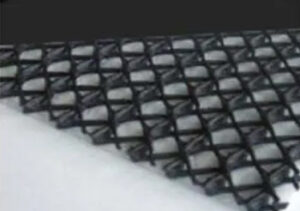At Geotexan we test all our drainage composite products in accordance with EN ISO 12958; Geotextiles and geotextile related products – Determination of water flow capacity in their plane.

Within this testing procedure the product is compressed between two platens and then the flow through the plane of the product is measured. These platens can be either soft to mimic the effect of placing soil, granular backfill or GCL against the composite or alternatively hard, to mimic solid structures or geomembranes.
Products can be tested between two hard platens, one hard and one soft platen or two soft platens. Many manufacturers take advantage of the ambiguity in the test procedure and report their flow rates using only two hard platens. This gives a good datasheet flow rate for the product, but doesn’t represent the real flow rate when the application has soil or granular backfill.
Our datasheets are presented with the correct platen combination for their intended application; for example Pozidrain is tested with soft platens that represent the reality of being part of the build up of a landfill cap, whereas Cavidrain is tested with hard platens that represent placement against a concrete tunnel wall.
The responsibility for selecting the correct test conditions resides with the specifier/contractor and not with the manufacturer. Geotexan want to make this as simple and accurate as possible because we know that our products will perform well under load, but also because we want you to specify and use the most suitable product for your application.
Very importantly, however, when comparing products from different manufacturers you must remember to check the test details on the datasheet to ensure like for like test results are being compared. Datasheets often hide the use of hard platens in the notes as r/r or h/h. So beware.
